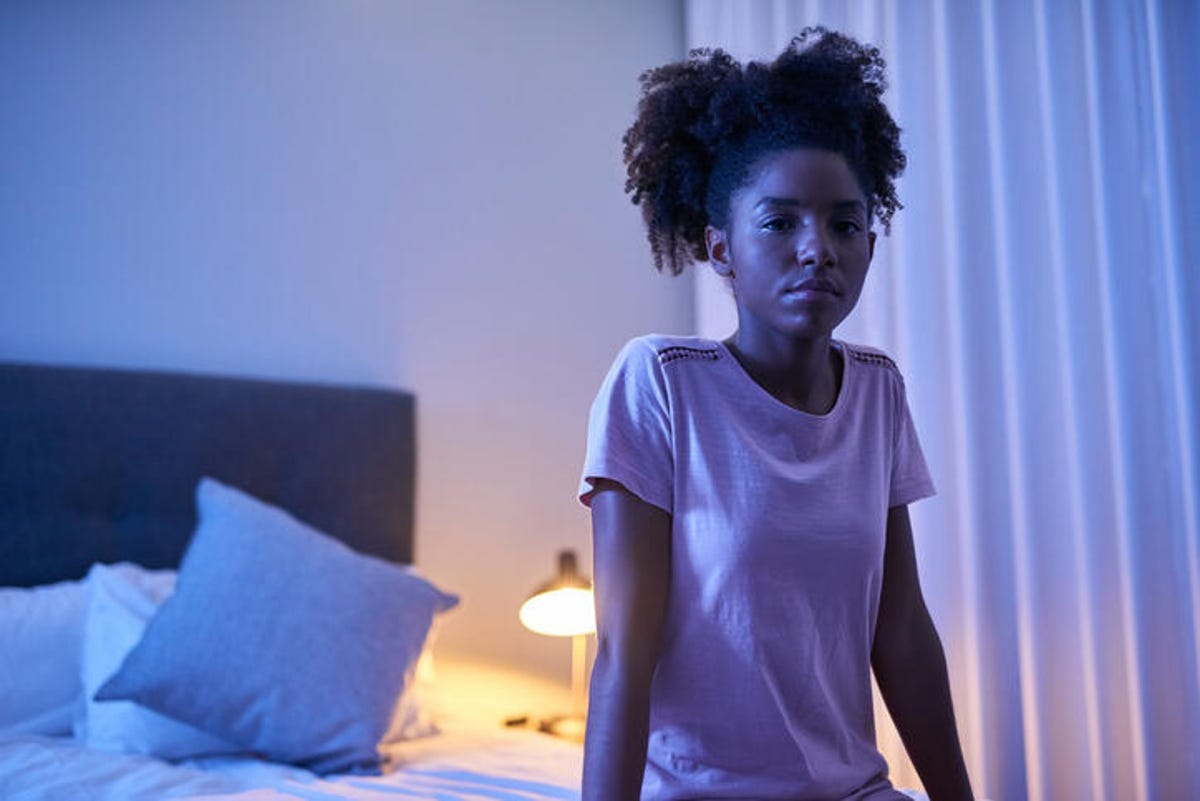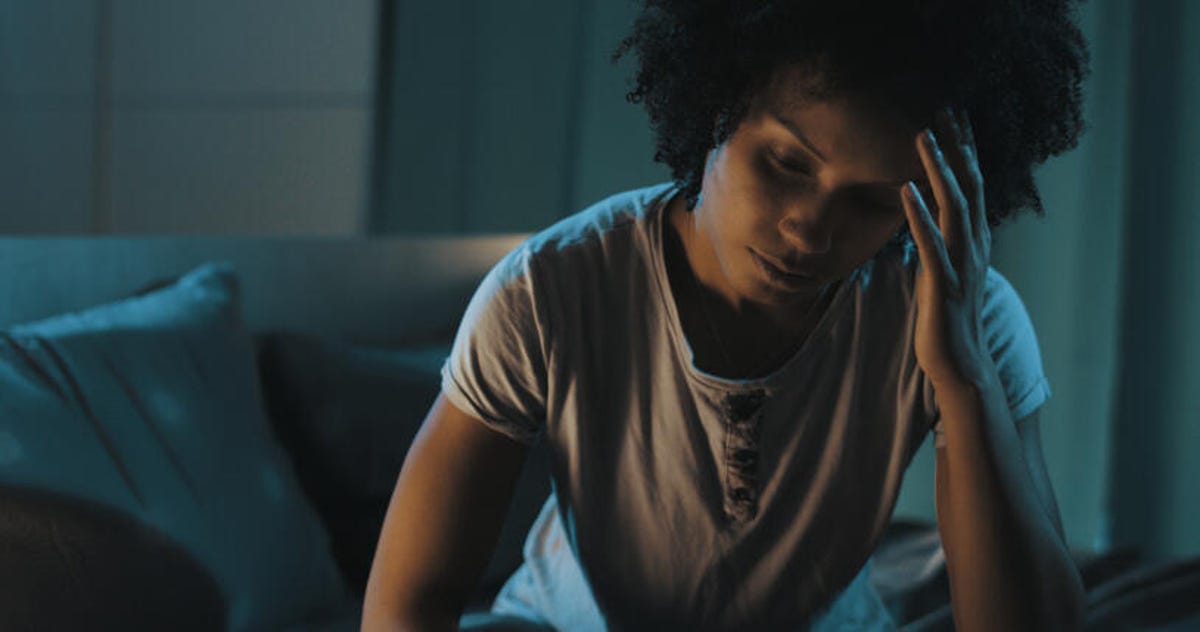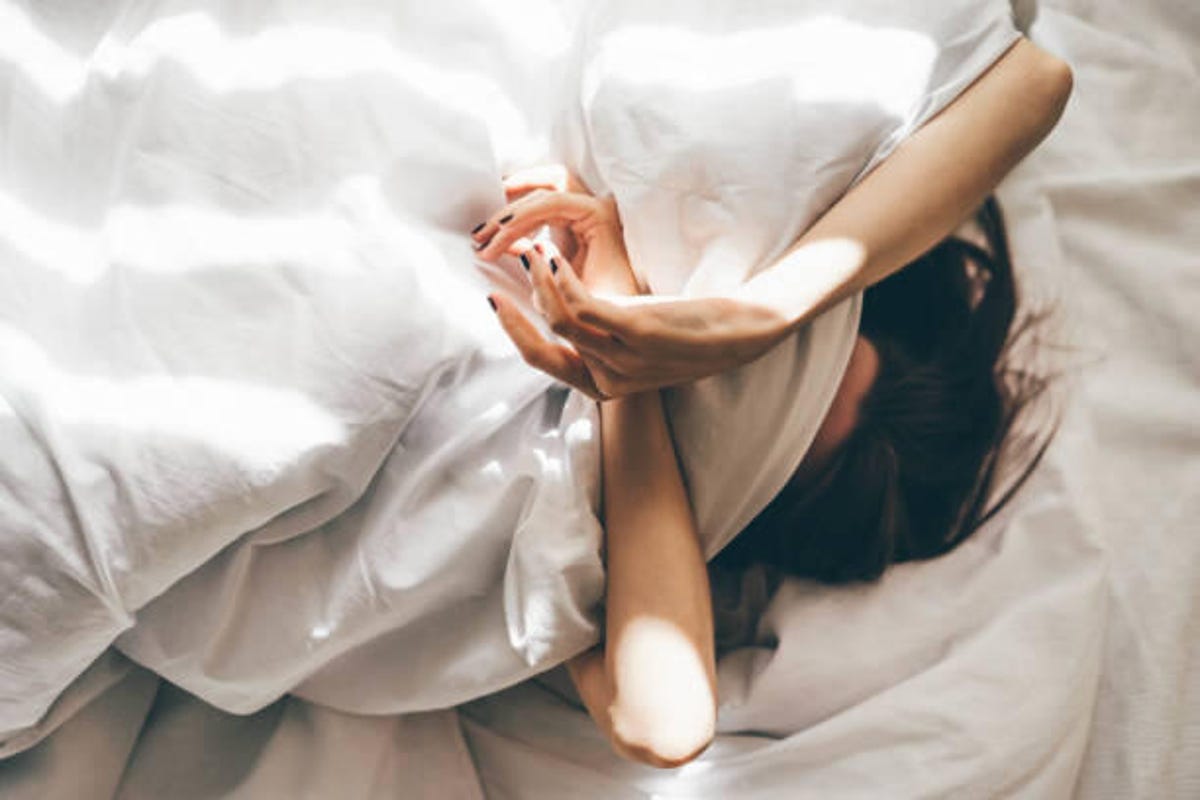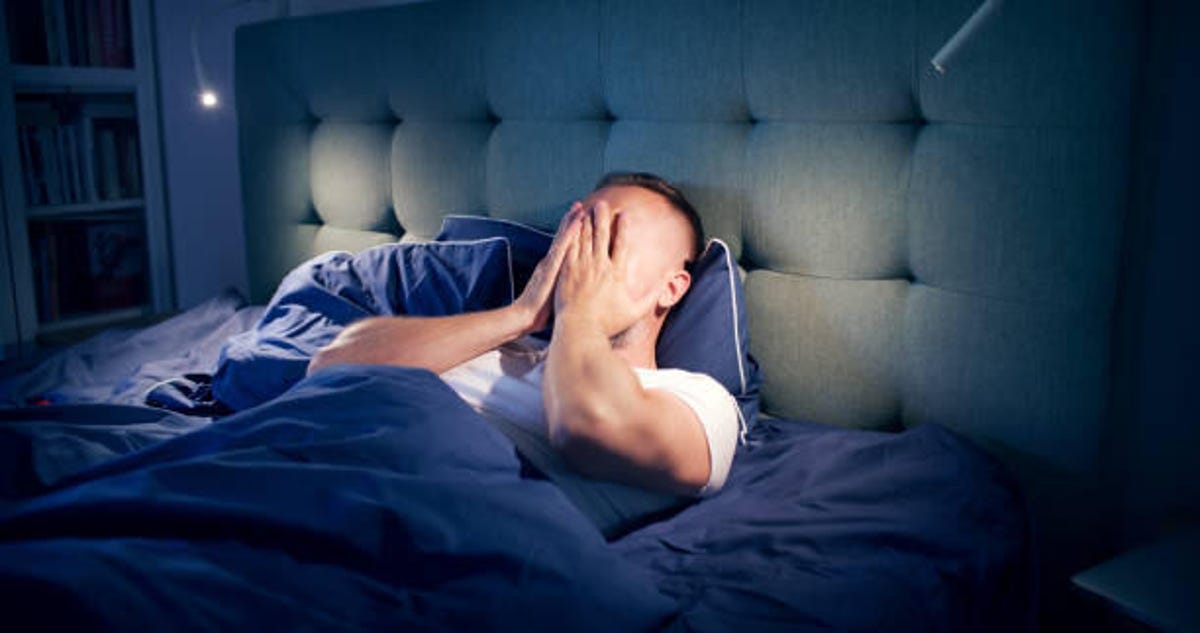How much do you truly know about your circadian rhythm and how much it affects your lifestyle? For me, it wasn’t until one weekend of binge-watching Modern Love on Amazon Prime Video that my interest was sparked. When I watched The Night Girl Finds a Day Boy, it hit me for the first time that there are people who live typical lives but who exist on a different time schedule.
The episode showed a woman who’s at her best and more coherent at night (like late at night) and how she finds the love of her life. Doesn’t seem like much of an issue, right? But the woman has something called delayed sleep phase syndrome, and it puts a strain on her relationship because the young man she’s dating has difficulty understanding her body’s sleep-wake cycle.
Here’s how one show opened my eyes to a much bigger issue that doesn’t get enough attention and needs more awareness. Real people are learning to navigate life with an internal clock that is not socially accepted, let alone understood.
Read More: Trouble Sleeping? These Easy Tricks Can Help
What is Delayed Sleep Phase Disorder?
DSPS is a circadian rhythm disorder that affects a person’s ability to go to bed at “normal” hours, which leads them to sleep most of the day away. Think of it this way: Imagine being jet lagged all the time, constantly sleepy and groggy. No matter what you do, your body doesn’t function on a 9-to-5 schedule or, for teenagers, a school schedule.
Typically, people with DSPS fall asleep anywhere from 2 a.m. to 6 a.m., meaning they don’t get rest until well after midnight. It’s not comparable to your body needing time to readjust during daylight saving time or being a “night owl.” People with delayed sleep phase syndrome have difficulty not only trying to explain what they’re experiencing but also trying to conform to a normal sleep schedule. The attempts typically result in more harm and confusion.
Read More: 7 Sleep Myths Debunked and Real Tricks to Achieve Better Rest

What causes DSPS?
There’s currently no single factor that explains why certain people get DSPS and why others don’t. Ultimately, some people’s internal clock can’t conform to a socially acceptable circadian rhythm.
What researchers have found, however, is that many aspects of life can contribute to the offset. These factors can include:
- Genetics
- Changes after puberty
- Psychological and neurological disorders
Most studies show that having a circadian rhythm disorder starts during a person’s teenage years. Then, it gets progressively worse into young adulthood.
One man with DSPS has grown a community out of the shared experience with the disorder in aims to spread not only awareness, but support; as the world is not so kind to people who are different.
“What they often fail to mention is that we have all this resistance, I mean physiological resistance to shifting it back,” said Peter Mansbach, founder of the Circadian Sleep Disorder Network
Life with DSPS
Everyone diagnosed with this syndrome is different. Researchers have found that most people are groggy, sleep-deprived and lack awareness when they go against their body’s natural circadian rhythm. Mansbach sums it up as being in a constant state of fogginess.
“The problem with delayed sleep phase sufferers is our schedule doesn’t shift,” he said. “So we just, we’re tired and then the next night you go to bed early or hoping to fall asleep but you don’t fall asleep early anyway, so then you’re even more tired on the second day and third day.”
DSPS is often misdiagnosed as insomnia, depression or other common sleep or mental health disorders. This can leave people who are experiencing it feeling misunderstood, not heard and confused. If they don’t understand why their internal clocks work differently, this can lead to other issues (such as obesity, anxiety and depression) as they try and force themselves to a schedule that their body doesn’t comply with.
Mansbach experiences DSPS. As he told me his story, he said he once had an early work meeting that he was doing everything in his power to get to. But when he got on the freeway he realized he accidentally drove up the wrong ramp. He was reminded of a beautiful quote he’d once read:
The impact of DSPS can expand beyond the typical grogginess symptoms: It can directly affect career advancement, medical appointments, schooling, parenting and more. Society is geared towards having services like doctor’s appointments, therapy sessions, classes and your favorite coffee shop accessible at a time when most people need it: the morning. But for people like Mansbach, it’s difficult to take advantage of those services during times he’s asleep.
One of Mansbach’s Circadian Sleep Disorder Network board members said that people with DSPS are “suffering” because they aren’t physically able to function on a typical schedule. Peter created CSDN as a way to build a community for those experiencing what he was going through. It’s grown exponentially because, as he explained, DSPS is not as rare as some may believe; there’s just not enough awareness about it because the symptoms may be misdiagnosed.
Read more: How to Combat 6 Common Sleep Disorders

What is life like for parents who have DSPS?
Alexandra Wharton, blogger and founder of the Delayed Sleeper and active member of the Circadian Sleep Disorder Network, aims to make a better future for those with DSPS. For her, having a circadian rhythm disorder started at the early age of eight and progressively got worse, as there was a lack of understanding and information about what she experienced growing up.
It wasn’t until around the age of 29 or 30 that she was properly diagnosed with DSPS. Wharton uses the term disorder instead of syndrome because a disorder signifies an interruption to regular bodily functions; whereas a syndrome is many symptoms happening simultaneously for a specific disease or disorder. Identifying DSPS as a disorder rather than a syndrome hints at a more chronic genetic occurrence that most people with DSPS and researchers are trying to find answers and effective treatments for it.
For Wharton, DSPS runs in her family and has been something she’s lived with for most of her life. The best advice she had to give and what worked for her is keeping a sleep log. She’s old school, so pen and paper are her go to, but with the Apple Watch health app, FitBit and other wearables, now anyone can digitally track their sleep in a way that is convenient for them. After our interview, she really stressed how important having a sleep diary is when seeking professional help. While it is best to speak with a neurologist for DSPS, most people see sleep doctors first. While these professionals can treat certain things like insomnia, sleep apnea and more, there’s no one-size-fits-all treatment for DSPS that works for everyone. Most times people are misdiagnosed and then put on a ton of selective serotonin reuptake inhibitors (SSRIs) that ultimately add to the problem.
So, when Wharton was ready and the discussion of kids came up, she thought that was not something that was in the books for her. She didn’t even consider parenting to be something she would want to take on as someone who has a circadian rhythm disorder.
“There’s no way I can take care of a kid because they wake up all night. That’s not even an option for me,” Wharton said.
Well, she did have a child. The truth is, she experiences everything “typical” parents do. However, with DSPD, she explained, having support and setting up a schedule that worked for her family made the process manageable. And this is what most parents would advise even if they didn’t live with a CRD. It’s definitely no walk in the park.
For Wharton, early motherhood from 0 to 5 years of age were the roughest years because daycares are in the morning; appointments, mommy and me activities and much more are designated for the early birds. However, as the kid grows up relief does come. For her family kindergarten was that milestone.
But it doesn’t stop there, she is also an advocate in this space. She’s the chapter leader for Start School Later in Texas, which aims to have kids start learning at times that are more acceptable for their bodies and awareness. The goal is to stress how important sleep is. Even though her kid isn’t diagnosed with DSPS she does she signs of it.

A sleepless woman lying in bed hiding under a duvet.
Read more: Why Your Sleep Quality Matters for Your Health
From Prozac to Lexapro to Celexa, Wharton has tried her fair share of SSRIs intending to resolve her delayed sleep. She was also adamant about how chronotherapy is a nightmare for delayed sleepers. If you truly have a biological issue and are being forced to stay up 24 hours to induce sleepiness in hopes of getting your internal clock on a standard time then you’re become miserable. In her experience, these routes do not work and in fact, make things worse. Not only does it screw up your sleep schedule even more, but as a patient in search of answers there’s this moment when the blame feels like it’s being placed on you and you feel attacked for something you truly cannot control.
For Wharton, starting her blog, X account (formerly known as Twitter), and being active in the Circadian Sleep Disorder Network community gave her the support she needed to be an advocate in this space. It was an eye-opener to see that she was not the only one looking for solutions for being a delayed sleeper.
Can DSPS be treated?
For people with delayed sleep, the main types of treatment that work best are cognitive behavior therapy, light therapy and melatonin. Mariana Figueiro, a specialist in research on the effects of light on human health, circadian photobiology, and lighting for older adults, shared some insights on her discoveries. The short answer to the question is no. Currently, there isn’t one treatment solely for delayed sleepers, but there is hope that technology is one step closer to finding a solution, and that is what Figueiro and her team are working on.
Figueiro emphasized that delayed sleepers have two main factors that make being an early riser challenging. Those factors are behavioral and physiological. Your circadian rhythm or internal clock has a lot to do with your biological makeup. Since their clock happens on a later schedule, their exposure to light is delayed. No one dictates how they are wired, but what we do have control over is turning bad habits into more healthy ones and creating environments that set us up for success.
In her professional experience, Figueiro believes that teenagers are the ones who have the toughest time with DSPS, specifically because they don’t have the freedom to do whatever they want and are more regimented. Plus for teenagers, this all happens during a time when their bodies are facing many other changes as well.
While the teenage years are when researchers really see the effects of delayed sleep, Figueiro explains that it is also associated with high at risk for:
- Mental health issues
- Sleep deprivation
- Obesity
- Other negative side effects
But adults are affected too. Yes, DSPS is more common than many people realize.

A frustrated man fighting with a sleeping disorder. Holding his head in his hands.
Shift work is something Figueiro explained as a possible solution for adults with delayed sleep. Those who can find work and activities to do at a later start in the day are not heavily impacted by the societal norms of a typical schedule. For adults, the issue arises when they cannot find work or activities that accommodate their internal clock and professional endeavors. Strife and difficulty happen as one who experiences delayed sleep cannot find alignment in their life. Of course, adults have a bit more flexibility and after the pandemic this might have opened up more possibilities for flexible schedules, but that is not the case for everyone.
“If people with DSPS had a flexible schedule where they can work until 3 o’clock in the morning and then wake up at 11, then there’s no problem for them. The problem is the social structure we impose on them,” said Figueiro.
This is where Figueiro’s research comes in. Ultimately, she and her team are on the hunt to understand and answer: “Can you change your clock, with light therapy so that you can move to an earlier time?” Essentially the theory is that when we moved from living outdoors to indoors, we’ve blocked ourselves from the natural light. When you’re indoors there is not a very robust light and dark atmosphere. Then there are things like light canceling curtains, rooms with no windows and much more that can impact your exposure to light. With these environmental changes in society, researchers are studying what are the criteria to deem someone has delayed sleep. Again right now is someone whose sleep schedule is set back by 2 to 3 hours.
How is DSPS diagnosed?
When seeking professional help, specialists will ask about your sleeping routine and habits. A sleep log or fitness tracker may be useful to help doctors properly diagnose you. Delayed sleep phase syndrome is often misdiagnosed because it can have similar symptoms that correlate with other sleep disorders.
“In general the diagnosis is more of a questionnaire type diagnosis,” said Figueiro.
When getting checked for DSPS sleep professionals will determine your dim light melatonin onset. This is your biomarker that determines when you fall asleep and get up. If your dim light melatonin onset is off by 2 to 3 hours then there’s a good chance that you may have a circadian rhythm disorder. And if you do have a CRD, relocating to another time zone is not the solution as your body will just adjust to the new time.
What does the future hold for people with DSPS?
After speaking with people experiencing DSPS and a specialist they all share one thing in common. The hope is that eventually, wearable technology will be as informative and useful for one’s sleep as it is for one’s physical fitness.
Read More: New Sleep Feature From MyFitnessPal Helped Me Learn More About My Sleep
Figueiro talked about having a light coach app that can instruct a person on when they need to get light. Similar to how one’s Apple Watch alerts a person when they need to get up and move or how one’s stomach grumbles when they are hungry, letting them know they need food. Figueiro says the running joke among colleagues is,
“The best tool is to get a puppy, because a puppy will force you out of bed.”
For Mansbach and Wharton, the hope is that others become more empathetic about the DSPS experience in the future because more and more people experience delayed sleep. Maybe people will be more understanding and, ultimately, there will be enhancements to wearables that help those who want to be on a typical schedule adapt better.
“It’s not as rare a disorder as people think. There’s still about 1 in 600 people that have the disorder and that’s half a million Americans; that’s three times as many people that have narcolepsy, even though a lot more people have heard of narcolepsy,” said Mansbach.

